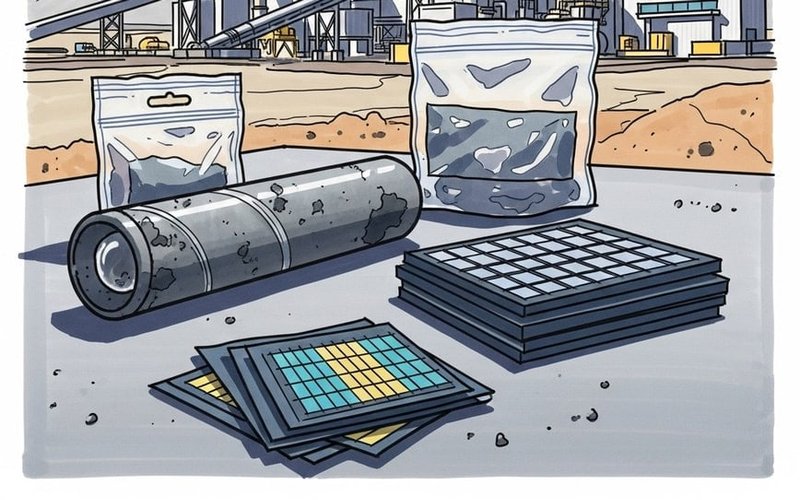The US Department of Energy (DOE) has announced plans to invest nearly US$1 billion into advancing mining, processing, and manufacturing technologies for critical minerals.
This is the first major DOE funding initiative under the Trump administration, marking a sharp pivot in Washington’s policy priorities.
Where once the DOE’s focus was on decarbonisation and clean energy projects under the Inflation Reduction Act, the emphasis has now shifted firmly to supply chain security and strategic sovereignty.
From Climate to Security
The funding program spans five initiatives aimed at reducing US reliance on foreign suppliers for minerals essential to semiconductors, batteries, and magnets.
Key commodities include lithium, nickel, graphite, gallium, and rare earth elements, many of which are dominated by supply chains in China and other geopolitically sensitive jurisdictions.
Notably, the DOE’s announcement repeatedly referenced “national security”, while making no mention of “climate” or “decarbonisation.”
This shift underscores the growing trend of resource nationalism, as the US seeks to safeguard critical supply chains amid intensifying tensions with China.
Key Funding Allocations
- US$500m – Expansion of US critical mineral processing, battery manufacturing, and recycling.
- US$135m – Rare earth demonstration facility using domestic waste streams.
- US$250m – Pilot projects to recover mineral byproducts from existing operations, particularly coal.
- Targeted allocations – Direct lithium extraction, gallium nitride for semiconductors, and ARPA-E’s US$40m initiative for mineral recovery from industrial wastewater.
Each initiative emphasises commercial readiness, cost-sharing (often 50%+), and scalability.
In short: only projects that can prove market viability and strategic alignment will attract funding.
Implications for Australian Companies
The DOE’s funding drive highlights how critical minerals are now viewed as strategic assets, on par with oil or defence infrastructure.
For Australian-listed companies, the implications are significant:
- Direct beneficiaries: ASX-listed lithium, rare earth, and graphite companies with US projects or partnerships stand to gain from policy support, accelerated permitting, and potential funding collaboration.
- Indirect beneficiaries: Even companies without US operations could benefit via global supply chain diversification and stronger investor appetite for “friendly jurisdiction” producers.
- Examples:
- Lithium developers with US-based projects could enjoy faster permitting and enhanced policy backing.
- Rare earth explorers operating in North America may attract strategic US funding partners.
- Graphite and other battery material players in Australia could see growing demand as downstream supply chains are reshaped.
This reinforces Australia’s position as a trusted ally and preferred source of critical minerals, strengthening its importance in the global supply chain.
Strategic Trade-Offs
While the shift from climate to security may strengthen supply chain resilience, it risks sidelining broader decarbonisation goals.
Mining and processing carry environmental costs, and narrowly protectionist policies could have unintended consequences.
Nonetheless, for Australian companies and investors, the takeaway is clear: demand for critical minerals is accelerating , whether driven by climate action or national security imperatives.
Those with US exposure or strong strategic positioning in allied jurisdictions are likely to benefit most from the DOE’s latest policy pivot.
